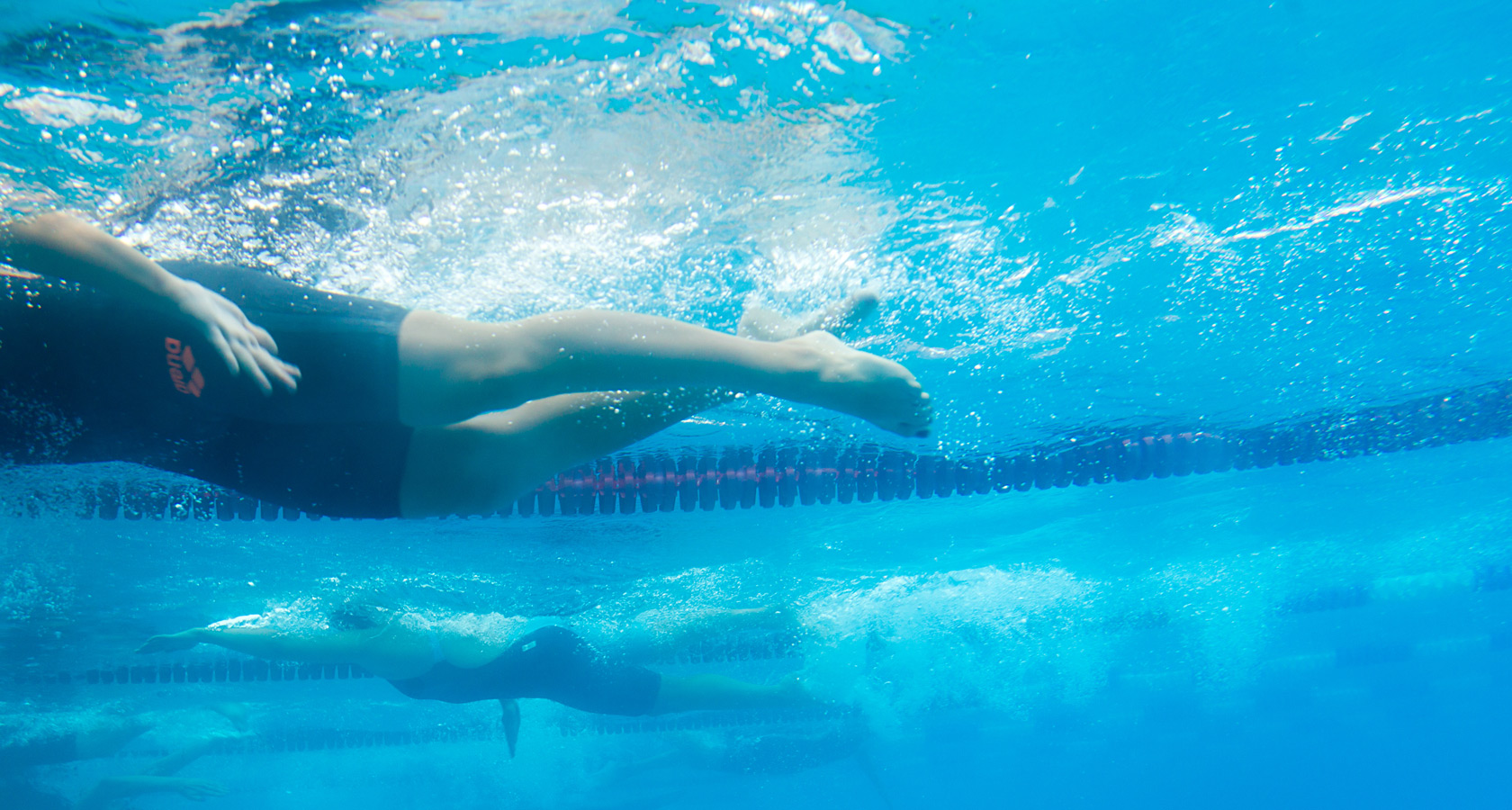Is Developing a Freestyle Kick Worth the Effort?
Most triathletes have extremely strong and fit legs, but few can kick fast. The biomechanics of a good freestyle kick are complex and very different than either cycling or running. The most crucial factor in developing a strong kick is usually missing in most triathletes: ankle flexibility. Having a lot of plantar flexibility of the ankle does not ensure that one will kick fast, but it is a prerequisite. Further, one must learn to kick from the hip with little knee bend, allowing the foot to do most of the bending rather than the knee. This tighter motion helps reduce frontal drag, while still enabling propulsion to occur. Without plantar flexibility, the only way to get the proper angle of the foot pushing backward is by bending the knee more. Unfortunately, once you do that, you throw the brakes on from frontal drag.
Developing a faster kick is not a short-term project. It requires time (months, not years), commitment (training in water and dryland), knowledge (technique) and patience. As every triathlete knows, there is only so much time in the day and week to train for three very different disciplines. So, is taking on the goal of improving your kick worthwhile or not?
Suppose your freestyle kick time for 50 meters with a board is 50 seconds. That equates to a speed of 1 meter/second. After six months of working on all aspects of your kicking speed, you drop your time to 45 seconds for 50 meters. Your speed is now 1.11 m/sec and it was no more effort to kick at that speed because you are now fitter and your kicking technique improved. In fact, it may have been less effort.
Depending on the event and your ability, your swim time will range from 15 minutes to well over an hour. Of course, you will not be sustaining the same speed you held for 50 meters, but if, through proper training, you can hold a kick speed of .1 m/sec faster through the duration of the swim, that would mean the following.
In a 15-minute swim, you will finish nearly 100 meters ahead of where you would have been. In an hour swim, you will leave the water 360 meters ahead. In two hours, over 700 meters ahead. It may not be a huge improvement in speed, yet a .1 m/sec increase provides a pretty big difference in how you finish. It may also enable you to stay with a faster pack of swimmers. What is the cost to you for this additional swimming speed? Will you have exhausted your legs for the bike and run? Not necessarily.
The biomechanics of kicking are so vastly different than cycling or running that you really need your legs to be fit for all three disciplines. By focusing more on your kicking, you may swim faster with less effort than by trying to kick with less fit legs or with poor mechanics. If you decide you want to get your kick faster, remember that there is no short cut, and please don’t just spend more time in the pool kicking. You will need more than that.
Start with a good ankle stretch for plantar flexibility. Do that stretch every day for several minutes. Fortunately, the ligaments in the anterior ankle are small and stretch pretty easily. You can see demonstrable improvements in flexibility within weeks.
Get to the gym twice per week to build your quads, hamstrings, gastrocnemius and lower back muscles. You will need strength in all of them for both the up and down kicks. The down kick provides about 80 percent of the total propulsion, but a strong up kick makes the following down kick more effective. So you need both.
Spend at least one hour of workout per week in the pool kicking. Work on kicking more from the hip, rather than the knees, allowing your foot to relax and bend more on the down kick. Try to feel the pressure on the water with the feet on both up kick and down kick, as if you are never letting go of the water. If you have trouble keeping your knees from bending too much, try placing a yellow elastic band (Finis) around the legs just below the knees. You may kick slower, but it will teach you to kick more from the hip with less frontal drag.
More than likely, you have a lot more to gain from improving your kicking speed than you do from improving your pull. You just need to focus more on the kick. Today, behind every great swimmer is a strong kick. If you want to take your swim to a different level, start working on your kick today.


